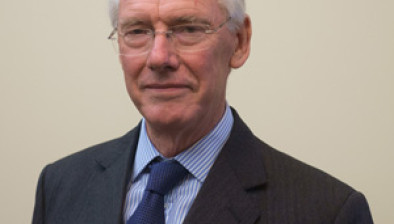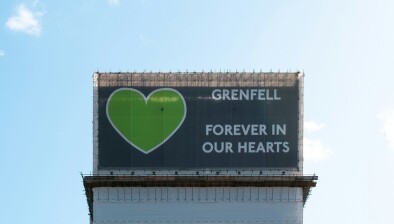No Grenfell Tower cladding used on Scottish council high-rises, Ministerial Working Group told

No council high-rise block in Scotland contains the type of cladding said to have been used in the Grenfell Tower fire, it was confirmed yesterday as the first meeting of the Ministerial Working Group convened to examine building and fire safety regulatory framework took place.
Last week the Scottish Government asked all local authorities and other Registered Social Landlords (RSLs) to provide tower block stock information to assist a ministerial review of Scottish regulations in the wake of the fatal blaze in West London.
During the meeting, which was chaired by communities secretary Angela Constance with housing minister Kevin Stewart and community safety minister Annabelle Ewing, it was confirmed that no high-rise blocks had used the same aluminium composite material found on Grenfell Tower.
The ministers were joined by officials from fire and rescue, building standards, local government and housing to oversee a review of building and fire safety regulatory frameworks with an initial focus on high rise domestic buildings following the fire.
Seventy-nine people have been confirmed as dead or missing presumed dead after the blaze which started in the early hours of June 14.
The group will agree any improvements or actions identified.
Initial actions agreed by the Group include:
Ms Constance said: “While we’re confident that in Scotland we have stringent building and fire safety regulations which contribute to keeping people safe, following the tragic events at Grenfell Tower it is imperative that we undertake a thorough and critical review of our regulations.
“Public safety is of paramount importance and, while the cause of the Grenfell Tower fire remains unknown at present, there can be no room for complacency. Communities across Scotland rightly want to know that we are taking all appropriate action and can provide them with the necessary reassurance required.
“That is why ministers have instructed Scottish Government officials to work closely with local authorities and the fire service to review all of Scotland’s high-rise domestic buildings, construction work that has taken place, the materials of any cladding and whether further action needs be taken as precautionary measure to prevent fire.
“Initial responses from local authorities suggests the type of aluminium composite material cladding reported to have been used on the Grenfell Tower, has not been used on their high rise blocks and this would be consistent with our current building standards regulations.
“We will continue to gather information from our local authorities and we will take a proactive and safety-first approach to this issue while we wait for information from the investigation in London.”
All new high rise domestic buildings in Scotland are fitted with non-combustible cladding or a cladding system that meets stringent fire tests, and since 2005 are fitted with sprinklers.
The formal remit of the group has been agreed as:
This group will oversee a review of building and fire safety regulatory frameworks, and any other relevant matters, in order to help ensure that people are safe in Scotland’s buildings, and make any recommendations for improvement as required. The initial focus of the Working Group will be on high rise domestic buildings. The Group will also consider other buildings including housing, NHS estate, schools and prisons. The Group will identify and take forward immediate actions in order to provide appropriate reassurance to residents and communities about their safety. In addition the Group will identify medium to long-term actions to be taken forward which will include fire and safety advice, and the adequacy of current fire and building regulatory frameworks. The Group will ensure Parliament is updated and respond to any requests as appropriate. The Working Group will continue to work with UK Government and devolved administrations in taking this work forward. The Working Group will also take technical advice as required in order to inform its considerations.







